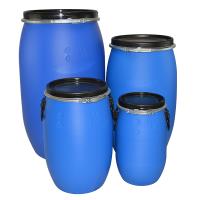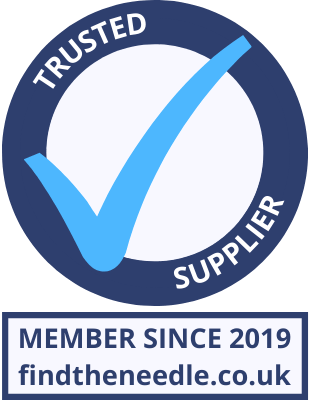 Add My Company
Add My Company
Sign In

Protective packaging is an essential part of the world’s supply chain, allowing everything from fresh fruit and vegetables to televisions and smartphones to be shipped internationally and domestically.
If you’re buying anything from a local shop, online, or even at a farmer’s market, at some point your newly purchased goods have been stored or transported in protective packaging. That’s how they get to their intended destination safely and in one piece.
But different industries need different types of protective packaging. After all, cardboard boxes and plastic wrapping might be suitable for the food industry, but they aren’t going to do the job if you’re transporting hazardous chemicals. In this article, we explore the key industries that require protective packaging and the types of protective packaging that different industries make use of the most.
KEY INDUSTRIES THAT NEED PROTECTIVE PACKAGING
There are a wide variety of industries that require protective packaging in order to safely and securely store and transport their products.
These key industries include the following, which we’ll cover in more detail below:
Food and beverage
Industrial goods
Consumer electronics
Household appliances
Healthcare
Automotive
Each of these key industries has different requirements, so there’s a wide range of protective packaging designed to be versatile and to meet these different needs. The most common types of industrial protective packaging used across different industries include the following:
Cardboard boxes
Fibre drums
Intermediate bulk containers (IBCs)
Plastic drums
Steel drums
Protective packaging comes in a range of sizes, specs, colours and materials, so it’s important to select the most appropriate packaging for the goods you need to store.
FOOD AND BEVERAGE
The food and beverage industry needs protective packaging to not only protect items of food and drink during transit, but to keep food and drink fresh (and to extend the shelf life of consumable goods).
In the supermarket, you’ll find that protective packaging varies by brand, and is also a source of identity and a place for nutritional information to be listed (such as the number of calories or grams of fat). Plastic packaging is common for cut meats and cheese, while aluminium cans and glass or plastic bottles are used for soft drinks and beers.
On an industrial scale, beverages and semi-solids (such as spices or food powders) are transported en masse using food grade plastic barrels, steel drums, fibre drums, or intermediate bulk containers. Other goods, such as large quantities of tinned beans or canned soup, can be safely transported using pallets or large cardboard boxes.
INDUSTRIAL GOODS
The industrial goods sector is a diverse one, but regularly involves potentially hazardous or dangerous materials that need to be moved and stored safely.
Industrial goods include large quantities of construction materials, such as cement, timbers, or bricks, as well as hazardous or corrosive materials and the hazardous waste that might be produced from industrial projects.
Health and safety is paramount, and the industrial goods sector needs to ensure that it’s using UN rated protective packaging. Hazardous materials, for instance, can be transported and stored in UN approved steel or plastic drums, which are also reusable once they’ve been decontaminated.
Protective packaging needs to be robust yet cost-effective, and it needs to be compatible in an industrial setting. Drums and wooden pallets, for example, can be easily stacked in warehouses and moved around or loaded into lorries using forklifts.
CONSUMER ELECTRONICS
Consumer electronics comprise a huge sector of the economy, but getting delicate personal electronics (such as laptops or smartphones) to customers requires the right kind of protective packaging.
Many electronics are made overseas, before being transported in bulk from manufacturing areas to supply depots, and then onto the customer. Individually, consumer electronics are often packaged in branded boxes (produced from cardboard or plastic). To protect the device inside, there can be extra packaging, such as polystyrene, foam or bubble wrap.
These items are transported on an industrial scale from the factory, bubble wrapped and packaged up in cardboard boxes. To get from the supply depot to your home, items are then packaged up in cardboard boxes for shipping.
HOUSEHOLD APPLIANCES
Household appliances need a similar style of packaging to consumer electronics. The household appliance industry produces key items as varied as fridges, freezers, cookers, microwaves and kettles.
Smaller items, such as kettles or microwaves, only need cardboard boxes with some protective bubble wrap or polystyrene for transit. Larger items, such as fridges or freezers, are also often wrapped in protective packaging such as bubble wrap and need sturdier, thicker cardboard boxes for transit.
HEALTHCARE
The healthcare industry requires a versatile range of protective packaging for its goods. This ranges from storage drums, which can transport pharmaceuticals in bulk, to the small glass vials needed for vaccinations.
On an industrial scale, pharmaceuticals and medical supplies are shipped in rigid cardboard boxes or in fibre or plastic drums to protect them.
Protective packaging needs to keep healthcare goods not only safe but sterile and uncontaminated during transit. For healthcare professionals and consumers, it’s integral that packaging can be used for labelling and for instructional purposes too.
AUTOMOTIVE
The automotive industry has a huge demand for protective packaging. While vehicles can be shipped in large containers or on the back of purpose-built lorries, it’s spare parts and maintenance equipment that are often more difficult to protect and package.
The industry requires packaging for parts as diverse as glass windscreens and motor oil and, consequently, makes use of everything from cardboard boxes and bubble wrap to UN rated steel drums.
For oils, lubricants and fuels, it’s important that the automotive industry selects UN rated storage methods that can keep liquids uncontaminated during long-term storage. For other parts, it’s important to protect the goods from damage when being shipped.
CONTACT ITP PACKAGING FOR MORE INFORMATION ON INDUSTRIAL PACKAGING
ITP Packaging stocks a comprehensive range of packaging that’s designed to meet a wide variety of industrial storage and transport needs.
If your business needs further information on the best types of packaging for your industry, our expert staff are on hand to answer your questions. Contact ITP Packaging today to find out more.
For more information on What Are the Key Industries That Require Protective Packaging? talk to ITP Packaging Ltd
Enquire Now
List your company on FindTheNeedle.

